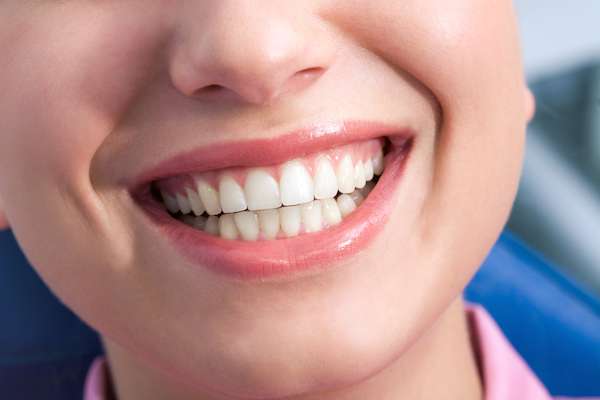A General Dentist Discusses the Benefits of Tooth Straightening
 In recent years, more patients have been asking general dentist professionals about straighter teeth. Orthodontic treatment has come a long way in the last decades. Patients may think that traditional braces are the only option, but clear aligners and appliance therapy are also available now. When having this conversation, it is important that patients discuss treatment goals and expected outcomes with the doctor. It can be helpful for people to view other patients' results so that they can be informed of all treatment options.
In recent years, more patients have been asking general dentist professionals about straighter teeth. Orthodontic treatment has come a long way in the last decades. Patients may think that traditional braces are the only option, but clear aligners and appliance therapy are also available now. When having this conversation, it is important that patients discuss treatment goals and expected outcomes with the doctor. It can be helpful for people to view other patients' results so that they can be informed of all treatment options.
3 benefits of straighter teeth
The numerous benefits of a straighter smile include feeling more confident, increasing efficacy of hygiene routines, and promoting good jaw health.
1. More attractive smile
In Western culture, most people consider straight teeth an attractive trait. Those with misaligned teeth may feel self-conscious and even refuse to smile. This can especially be a problem in the adolescent years. Orthodontic treatment by a general dentist can help restore confidence in a person who perceives their smile to be unattractive. These treatments do not only change the teeth; movement of the jaws can change facial structure and influence overall appearance. In some cases, the dentist may be able to show projections of what the final result will look like.
2. Better hygiene habits
When teeth are crowded and misaligned, patients can have difficulty with effective brushing and flossing. Plaque can collect in the places the teeth overlap and make oral hygiene more difficult. When the teeth are correctly positioned, brushing immediately becomes easier, and usually more plaque is removed. It is important to note, though, that oral hygiene can suffer during orthodontic therapy if the patient is not diligent. Brackets and wires used with traditional braces can create a plaque trap, so patients must commit to pristine oral hygiene during treatment.
3. Reduced TMJ issues
The temporomandibular joint, also known as the TMJ, can become strained over time when the patient's jaws are not properly aligned. This is especially an issue when the patient has a severe overbite or underbite. A general dentist can use appliance therapy and orthodontic treatment to correct abnormal jaw alignment. This helps reduce the risk of conditions like arthritis in the TMJ. Patients may also report less clicking or popping of the jaw joints. Patients may be instructed to wear a night guard or retainer to keep the teeth in proper alignment.
Conclusion
Dentistry continues to evolve and improve to bring patients optimal care. Orthodontic treatments can benefit a patient in many ways and increase the quality of oral health. Gone are the days when braces meant only metal brackets and wires in the mouth. There are many options available for patients now, and anyone with misaligned teeth can take advantage of the treatments available. With some careful research and consideration, a patient choosing orthodontic treatment for a straighter smile can look forward to the benefits of properly aligned teeth for years to come.
Request an appointment or call Cedar Lane Family Dentistry at 317-736-7476 for an appointment in our Franklin office.
Related Posts
General dentists spend a significant portion of their time performing preventative dental treatments. These treatments reduce the odds of common dental issues, like tooth decay and gum disease, from developing in the future. Preventative care saves patients time and money by making it less likely that they will develop severe dental problems that call for extensive…
Fluoride is a preventative measure that your general dentist uses to help protect your teeth between visits. It is also an ingredient in toothpaste that can give added protection. One of the most hotly debated topics surrounding toothpaste and tooth brushing is whether or not you should be using toothpaste that contains fluoride. Using toothpaste with…
Visiting a general dentist regularly can have a tremendous impact on the health and appearance of teeth. While carving out time in a schedule every six months for a dentist appointment can seem inconvenient, there are several reasons to set aside an hour or two twice a year for these visits.Dental professionals use specialized tools…
